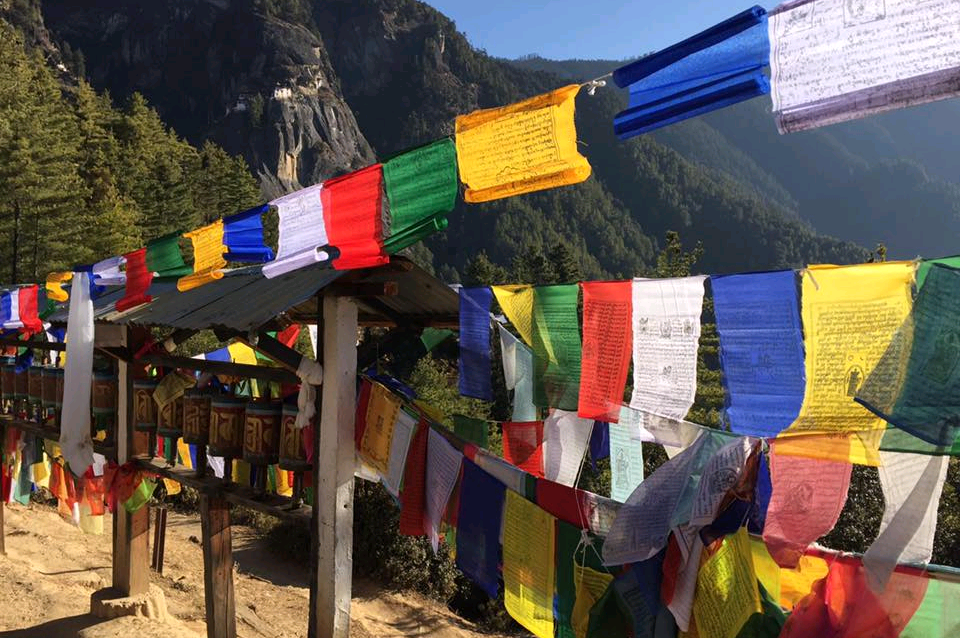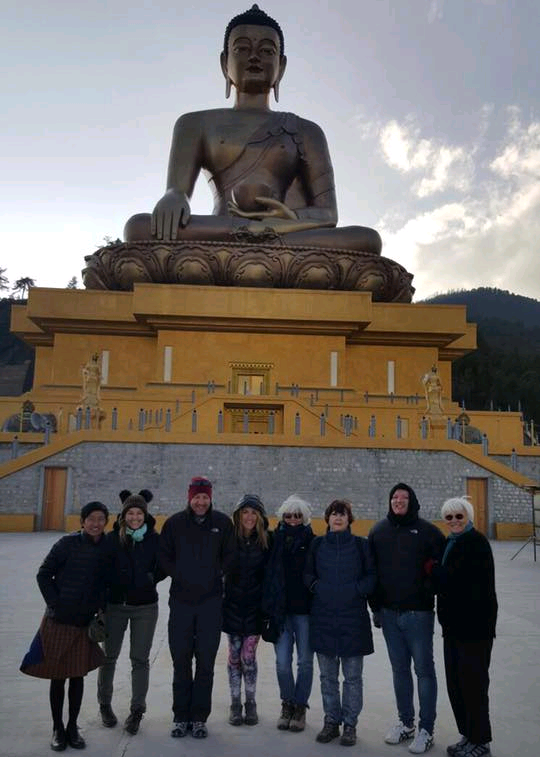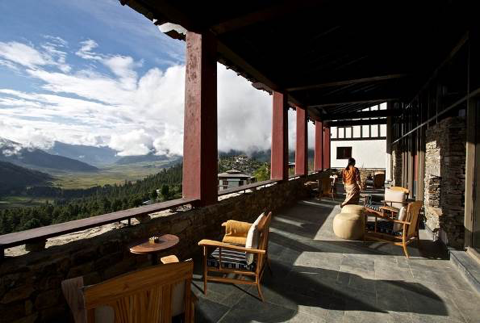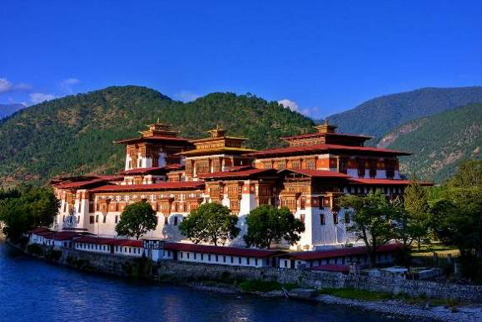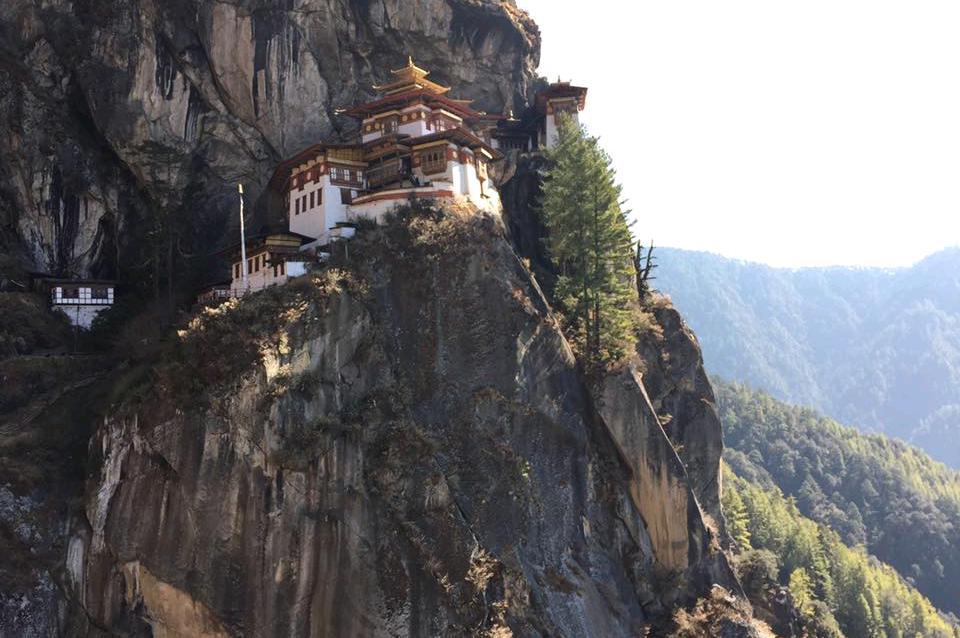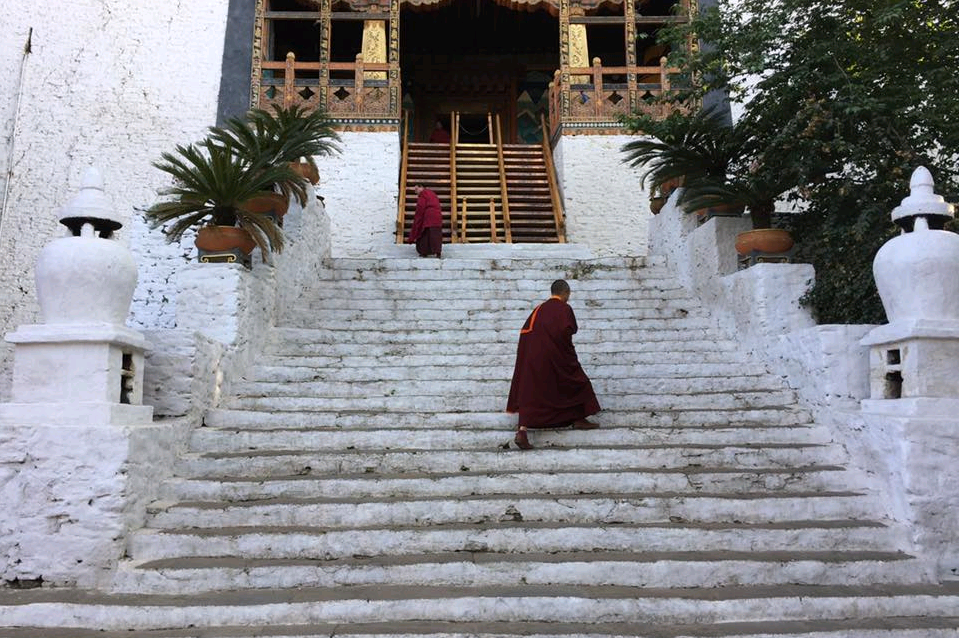Once almost unheard of, Bhutan is now more commonly featured in newspapers and travel magazines, so I was keen to visit to find out what it has to offer. Culture enthusiasts and active travellers will not be disappointed. Tourism in the country has been tightly regulated for many years, so the experience is very authentic and unspoilt.
I spent eight days exploring the Kingdom of Bhutan on a private, tailor-made journey designed for me by &Beyond, a leading luxury experiential travel company. This included chauffeured transfers between cities and luxurious accommodation at Aman properties in Thimpu and Paro, Gangtey Lodge and Uma by COMO, Punakha. See itinerary here.
I started my journey by flying into Paro Airport, the gateway to Bhutan. The flight takes you close to the great Himalayas, offering dazzling scenic views of some of world’s highest glacial peaks, and on through the Paro valley for my first glimpses of this mystical land. The experience is simply breathtaking, if not a little ‘hair raising’, as it is considered one of the most complex airports in the world for pilots to land in.
Thimphu
Thimphu was the first stop on my itinerary. Here I visited Tashichho Dzong, Bhutan's administrative and religious centre. It houses the throne room of the King of Bhutan as well as the nation's largest monastery. There are stunning Dzongs (fortresses) located throughout Bhutan, which act as focal points for the local communities.
The next day, I stared in awe at the Buddha Dodernma, a gigantic, gilded bronze Buddha statue. At a height of 51.5 metres, it is one of the tallest Buddha statues in the world and is filled with more than one hundred thousand smaller gilded Buddha statues. It is a shining symbol of the spirit of Buddhism that permeates all aspects of life in Bhutan, where stupas and prayer flags are a regular sight on your travels.
To gain an insight into the country’s culture and crafts, I visited the Folk Heritage Museum, a weaving centre and a paper-making factory, which uses traditional methods that have been practiced for generations, all of which were very interesting and informative.
Gangtey
From there it was on to Gangtey, via the Dochu La pass, which offers panoramic views of the Himalayas. It’s worth noting that driving distances can be long and the roads not for the faint-hearted, so a steady rather than swift pace is the order of the day! It’s all part of the wonderful experience.
I stayed at Gangtey Goenpa Lodge, which ranks as one of the most wonderful properties I have ever stayed at. From breathtaking views over the Gangtey valley to the log fires in each of its 12 guest suites, it was simply extraordinary.
The attractions of Gangtey are quite varied. There is an impressive monastery (Gangtey Goemba), peaceful nature trails and opportunities to observe endangered black-necked cranes. It also afforded me the most memorable meal of my trip - Yak Chilli Con Carne – at the Amankora Gangtey.
Punakha
In the picturesque valley town of Punakha, I stayed at Uma by COMO, Punakha, an intimate, luxury lodge overlooking the Mo Chu River. Here I visited possibly the most beautiful Dzong in Bhutan. Set on the riverbank and with a lush mountain backdrop, it was visually stunning.
Paro
Saving the best for last, I made my way back to Paro, a historic town with many sacred sites and historical buildings. Amankora Paro was my base for a hike to the iconic ‘Tiger’s Nest’ (Taktsang Monastery). Hiking to and arriving at the monastery was breathtaking, both literally (due to the altitude) and figuratively (due to the amazing views along the way). However, it is more than worth the effort as the monastery is so iconic and offers a truly spiritual experience.
Back at Amankora Paro, evening activities include traditional cultural performances, prayer flag printing and informative lectures on Bhutan’s Gross National Happiness index. Prosperity, in terms psychological wellbeing, health, education, time use, cultural diversity, good governance, community vitality, ecological diversity and living standards, is measured and reflected in the index. This drives the country’s social, political and economic system, as government decisions must be in the public interest or they are not enacted. I found the idea quite fascinating.
I would not hesitate to recommend a similar trip for my clients, as Bhutan is a great year-round destination. I travelled in winter, which offers snow-capped mountains and the clearest views of the Himalayas, but it can be very cold. For this reason, spring is the most popular time to visit, as the days are warmer and the rhododendrons are in full bloom.
- Melinda Spain, Jones & Turner Travel Associates
Keen on exploring Bhutan yourself? Talk to Melinda today to start planning your holiday.

